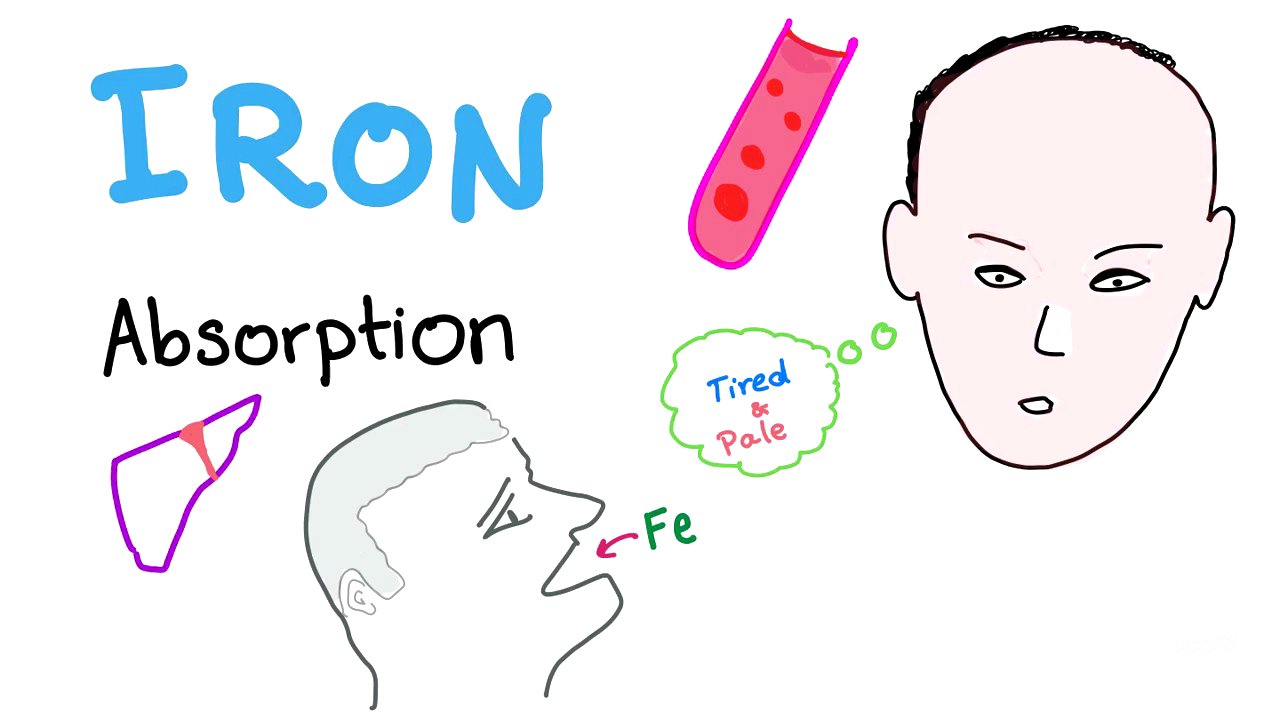TLDR;
This video explains iron absorption and regulation in the body, focusing on the roles of hydrochloric acid, vitamin C, ferrous and ferric iron, enterocytes, ferroportin, transferrin, hepcidin, and the Fenton reaction. It details how iron is absorbed in the duodenum, transported in the bloodstream, and stored or utilized in the bone marrow and liver. The video also covers the regulatory mechanisms that control iron absorption based on the body's iron levels.
- Iron absorption is heavily regulated because the body has limited ways to eliminate it.
- Ferrous iron (Fe2+) is absorbed in the duodenum via heme carrier protein 1 or divalent metal transporter 1.
- Hepcidin regulates iron absorption by inhibiting ferroportin and iron release from macrophages.
Introduction to Iron Studies and Absorption [0:00]
The video introduces the topic of iron studies and emphasizes the importance of understanding iron absorption. It highlights that the body has limited methods to eliminate iron, making iron absorption a heavily regulated process. The discussion sets the stage for a detailed explanation of iron absorption, covering its sources from diet and the breakdown of red blood cells.
Iron Sources and the Role of the Stomach [0:55]
The video explains that iron comes from dietary intake and the breakdown of old red blood cells. In the stomach, hydrochloric acid and vitamin C convert ferric iron (Fe3+) to ferrous iron (Fe2+), which is more easily absorbed. The video uses mnemonics to help remember that Fe2+ carries O2 and Fe2+ goes into the enterocyte for absorption.
Iron Absorption in the Duodenum [4:11]
The video details the process of iron absorption in the duodenum. Ferrous iron (Fe2+) enters the enterocytes via heme carrier protein 1 or divalent metal transporter 1 (DMT1). Inside the enterocyte, iron can be stored as mucosal ferritin and shed in the stool, or it can be transported out of the cell via ferroportin. Once outside, it is converted to ferric iron (Fe3+) and binds to transferrin for transport in the bloodstream.
Iron Transport and Hepcidin Regulation [6:18]
The video describes how ferric iron (Fe3+) binds to transferrin in the bloodstream and is transported to the bone marrow for red blood cell production or to the liver. In the liver, iron stimulates the production of hepcidin, a regulator that inhibits further iron absorption by blocking ferroportin and preventing iron release from macrophages. This regulatory mechanism ensures that iron absorption is controlled based on the body's needs.
The Fenton Reaction and Hepcidin's Role [8:46]
The video explains the Fenton reaction, where free iron generates harmful free radicals that can damage tissues. It emphasizes the importance of iron being bound to proteins like transferrin to prevent this. The video further explains that high iron levels stimulate hepcidin production, which inhibits iron absorption, while low iron levels decrease hepcidin, promoting iron absorption and release.
Regulation of Iron Absorption and Storage [10:11]
The video discusses how the enterocytes in the duodenum have sensors to regulate iron absorption based on the body's iron stores. The HFE gene helps the enterocytes absorb iron in the ferrous state. If hepcidin blocks iron from being absorbed through ferroportin, the only way for iron to be shed is through mucosal ferritin in the stool.









